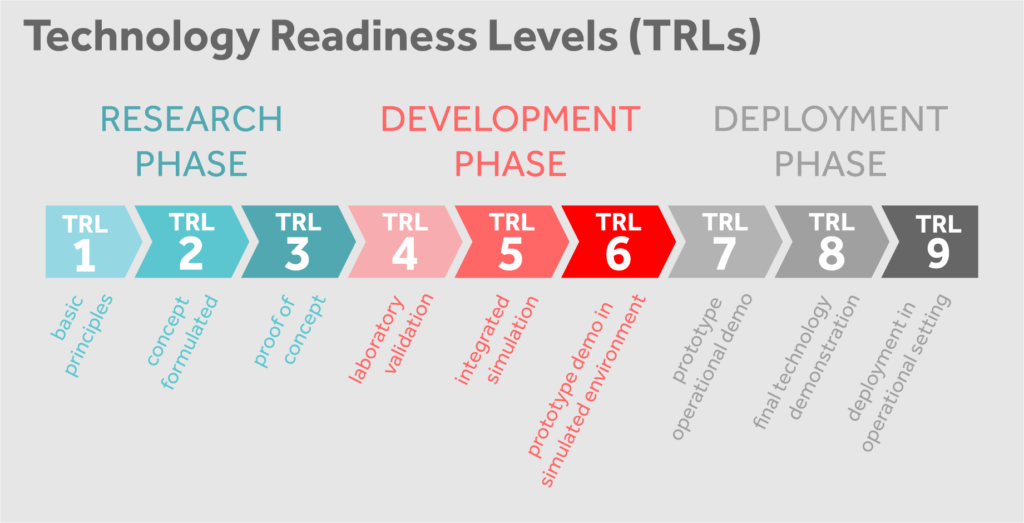Realizing New Opportunities
In almost every industry, there are opportunities to step outside the confines of existing technology, to challenge the norm and to push the industry itself to new heights.
These opportunities often present themselves to people already familiar with certain aspects of that field but may lack the technical knowledge or access to facilities to carry the concept beyond the initial idea stage.
In such instances, Coanda assists with the technology development of such emerging processes by providing the technical insight and hands on experience needed to bring them to fruition.

Technology Readiness Levels (TRLs)
Coanda specializes in advancing technology through the 9 Technology Readiness Levels, which characterize the maturity of an emerging technology or process:
Early conceptual / research work:
- TRL1: Basic principles of concept are observed / reported via scientific research and applied R&D.
- TRL2: Technology concept / application formulated / invented.
- TRL3: Active R&D: Analytical and experimental critical function / proof of concept studies.
Developmental stages:
- TRL4: Component validation in laboratory environment, establishing basic technological components will work together.
- TRL5: Components are integrated in simulated environment tests.
- TRL6: Model or prototype demonstration in simulated environment representing a near desired configuration.
Deployment phase (pre-commercialization gap):
- TRL7: Prototype ready for demonstration at appropriate operational levels and environment.
- TRL8: Actual technology completed and qualified through tests and demonstrations in its final form at expected conditions.
- TRL9: Actual technology proven through successful deployment in operational setting, technology in its final form and under real-life conditions.
Top-down Methodology
The development of new technology requires a ‘top down’ approach, in which the commercial deployment is considered first. The commercial configuration is then ‘stress tested’ to flush out the technology gaps.
Technology development activities are then tailored to address these gaps, and the results are used to revise the commercial deployment. Iteration is continued until all technology gaps have been addressed. This established approach to technology development ensures that only relevant activities are executed.
Passing the Torch
As more resolution on the commercial deployment is obtained, the design is transitioned to a formal engineering team who can add detail to the concept, moving it to through to commercialization via a conventional engineering workflow.
Depending on the nature of the project and the client, such teams can range from traditional EPC companies to internal product development engineers.
Coanda's Burnaby laboratory
scaled model of a pump inlet
Cost Effective Technology Development Requires a Specialized Skill Set
To manage this technology development process a unique skill set is required. The individuals must understand both the laboratory, and the commercial engineering processes, and how to move between the two. Coanda offers this combination of expertise. At a high level the skills required include:
- Process scale up and scale down
- Technology development planning
- Familiarity with the project execution steps followed by a traditional engineering company
- Intellectual property management, so that value is not destroyed during the development process
- Knowledge on how to execute development activities making best use of all funding programs
Driving Industry Forward
Due to the nature of its business, Coanda has developed core competencies in each of these critical areas. Almost all of the projects that we work on involve intellectual property, and as such Coanda seeks to exceed industry standards with regards to the protection of IP, a key factor in most technology development programs..
Since inception, we have helped dozens of entrepreneurs move their respective technologies forward, through technology development providing support on all, or a subset of the elements listed above.


